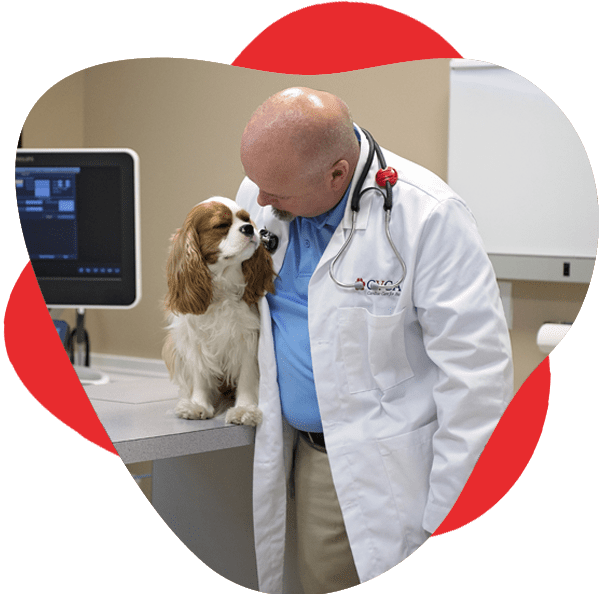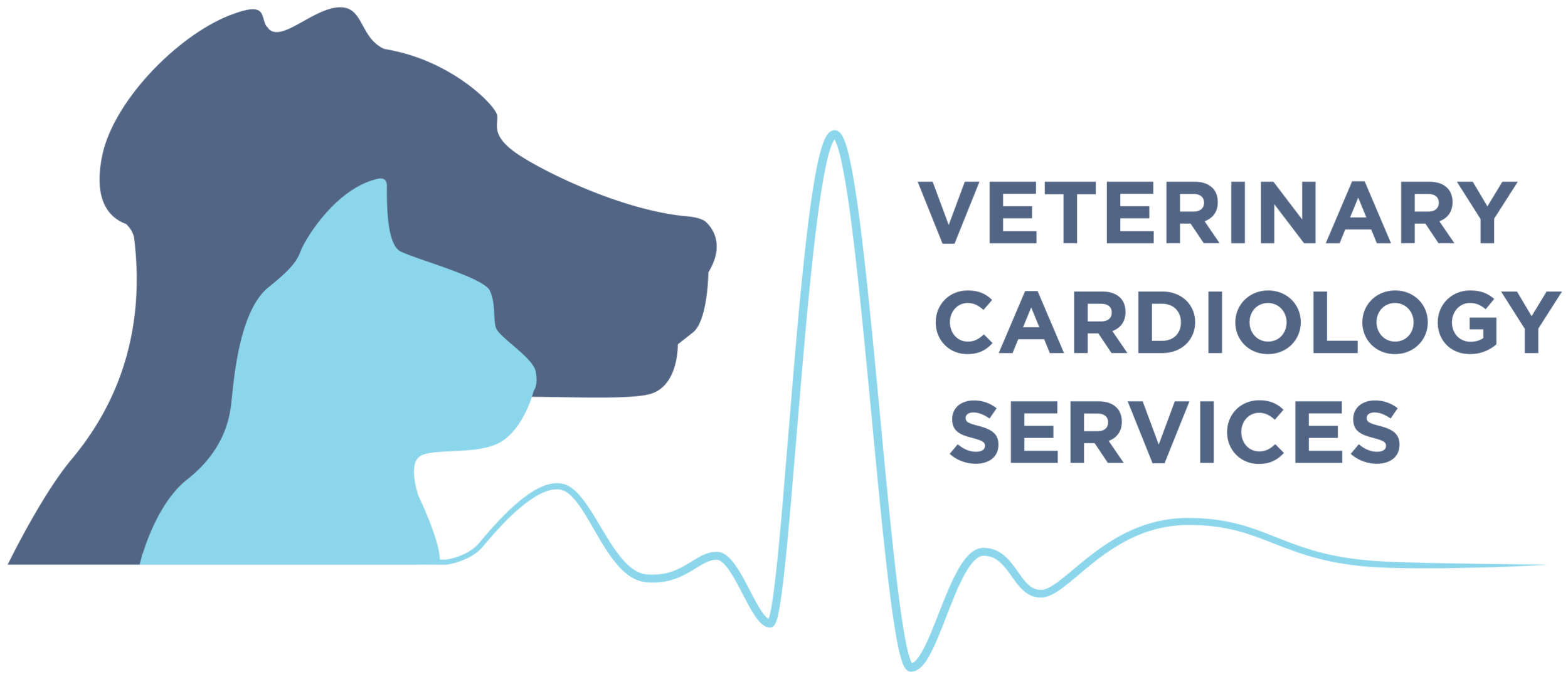How Accurate Are CT Scans For Dogs in Detecting Health Issues?}
Wiki Article
The Duty of Ultrasound and CT Check in Modern Vet Practices: Insights From Experienced Professionals
In modern veterinary practices, ultrasound and CT scans greatly enhance analysis capabilities. These imaging methods provide essential understandings into animal health, directing therapy choices. Experienced experts acknowledge the unique advantages of each modality. Ultrasound uses real-time assessments, while CT scans provide complex anatomical details. Recognizing their duties and applications increases vital concerns concerning their influence on person outcomes and the future of veterinary diagnostics. What understandings can be gotten from their combined usage?Recognizing Ultrasound in Vet Medicine
Ultrasound is a necessary diagnostic device in veterinary medicine, offering a non-invasive technique to imagine interior frameworks. This imaging technique uses high-frequency acoustic waves to produce real-time images of tissues and organs, enabling veterinarians to assess problems without surgical treatment. Usual applications consist of reviewing the heart, liver, kidneys, and reproductive organs, as well as monitoring pregnancies.The procedure is reasonably quick and can be carried out in various setups, making it an available option for veterinarians. Unlike radiography, ultrasound offers detailed info regarding soft cells and blood circulation, which is important for accurate diagnoses.Veterinary specialists count on ultrasound to discover abnormalities such as lumps, cysts, and fluid buildup. Its ability to guide biopsies and other treatments additionally enhances its energy in medical method. By providing a effective and safe method to take a look at inner makeup, ultrasound has ended up being a cornerstone of modern-day veterinary diagnostics.
The Benefits of CT Checks for Animal Diagnostics
CT scans offer significant advantages in vet diagnostics by giving boosted precision in recognizing inner conditions (Cancer Veterinary Near Me). As a non-invasive imaging method, they ensure the security and convenience of pets throughout exams. Additionally, CT checks help with a thorough assessment of interior structures, allowing for extra reliable therapy preparationImproved Analysis Accuracy
Innovations in imaging technology have greatly boosted diagnostic precision in veterinary medicine, particularly with using CT scans. These scans offer comprehensive cross-sectional pictures of an animal's inner structures, enabling veterinarians to identify irregularities with precision. The high resolution and three-dimensional capabilities of CT imaging help with the discovery of problems such as growths, cracks, and inner bleeding that could be missed out on with conventional imaging methods. Additionally, CT scans can assist in pre-surgical preparation by using a thorough sight of anatomical partnerships. This degree of information not only improves the precision of medical diagnoses however additionally help in customizing effective treatment plans. As a result, the combination of CT innovation into vet techniques is changing the landscape of pet healthcare, improving end results for people.Non-Invasive Imaging Method
The introduction of non-invasive imaging strategies has actually revolutionized animal diagnostics, with CT scans becoming a prominent tool in veterinary practices. These scans provide high-resolution, cross-sectional photos of a pet's inner structures, allowing veterinarians to evaluate complicated conditions without the requirement for invasive treatments. The advantages of CT scans include their capability to discover tumors, fractures, and internal blood loss with amazing accuracy. Additionally, they assist in the analysis of soft tissues and organs, enhancing diagnostic capacities. The speed of CT scanning makes it possible for quick decision-making, which is essential in emergency scenarios. By lessening anxiety and discomfort for the pet, CT scans add to an extra humane approach to diagnostics, inevitably improving treatment end results and advancing vet care.Comprehensive Internal Analysis
A comprehensive inner assessment is crucial for accurate medical diagnosis and reliable therapy in vet medication. CT scans offer significant advantages hereof, supplying in-depth cross-sectional photos of an animal's inner frameworks. This sophisticated imaging modality boosts visualization of intricate anatomical areas, enabling veterinarians to identify problems such as tumors, fractures, and internal bleeding with better precision. Furthermore, CT scans facilitate the evaluation of conditions that might be testing to identify through conventional techniques. The speed and accuracy of CT imaging also contribute to prompt treatments, improving patient results. As veterinary techniques significantly include CT technology, the advantages of comprehensive interior evaluations end up being apparent, reinforcing the importance of this tool in modern vet diagnostics.Contrasting Ultrasound and CT Imaging Techniques
While both ultrasound and CT imaging serve necessary functions in veterinary diagnostics, each technique uses unique benefits and constraints that can influence scientific decision-making. Ultrasound is particularly valued for its real-time imaging abilities, permitting vets to observe vibrant physiological processes. This technique is non-invasive, portable, and does not entail ionizing radiation, making it a more secure option for both medical professionals and pets. Ultrasound may have restrictions in visualizing particular physiological structures or deep tissues.Conversely, CT imaging offers comprehensive cross-sectional sights of the body, enabling for exact localization of irregularities. It masters assessing facility organs and structures, especially in the thorax and abdominal area. However, CT scans call for sedation or anesthetic in several instances and include direct exposure to ionizing radiation. Eventually, the option in between ultrasound and CT relies on the certain medical circumstance, the location of rate of interest, and the seriousness of the diagnostic demands.Case Researches: Effective Medical Diagnoses Through Imaging
Instance studies illustrate the significant enhancements in diagnostic accuracy achieved via innovative imaging modern technologies like ultrasound and CT scans in vet methods. These developments not just improve the detection of different conditions yet also help with efficient and prompt treatment plans. Assessing details instances can highlight the transformative influence of these imaging methods on vet medication.Diagnostic Precision Improvements

Imaging Innovation Advancements
As veterinary imaging technology remains to develop, its effect on diagnostic capabilities becomes progressively noticeable. Current study highlight the successful application of innovative ultrasound and CT check methods in determining complicated conditions. A vet facility made use of high-resolution CT scans to diagnose an uncommon type of lung cancer cells in a pet dog, which traditional imaging had actually missed. An ultrasound evaluation disclosed a stomach mass in a cat, prompting prompt surgical intervention and a favorable end result. These developments not just improve analysis accuracy yet also allow veterinarians to devise targeted therapy plans. By leveraging cutting-edge imaging innovations, veterinary experts are substantially enhancing individual care, bring about more effective management of different health problems in animals.
The Role of Imaging in Emergency Veterinary Care
Imaging plays an essential role in emergency situation vet treatment, providing vets with crucial information required to make fast, informed choices. In immediate scenarios, methods like ultrasound and CT scans make it possible for professionals to promptly assess a pet dog's internal structures, determining important problems such as inner bleeding, cracks, or body organ abnormalities. These imaging methods enable real-time assessments, promoting timely treatments that can be life-saving. As an example, ultrasound is indispensable for examining soft cells injuries and problems like liquid accumulation, while CT scans offer comprehensive images of complex physiological frameworks, essential for diagnosing trauma cases. The speed and precision of these imaging strategies improve the vet's capability to design efficient therapy plans, making certain the very best possible results for their patients. Consequently, the assimilation of sophisticated imaging innovations into emergency situation veterinary practices is not only beneficial but increasingly essential, as it boosts analysis capacities and improves overall pet treatment throughout defining moments.Training and Proficiency in Veterinary Imaging
Advanced imaging strategies such as ultrasound and CT scans are essential for efficient vet treatment, the successful application of these technologies greatly depends on the training and knowledge of vet experts. Skilled usage of imaging devices calls for detailed expertise of makeup, pathology, and the concepts underlying each method. Veterinary specialists must undertake specialized training to accurately interpret imaging results, which is vital for identifying problems and planning treatment.Certifications and proceeding education and learning in vet imaging improve the abilities of practitioners, allowing them to stay updated with technical innovations. Collaboration in between vets and radiologists usually causes boosted analysis accuracy, as experts can supply insights right into complicated instances. On top of that, useful experience in dealing with imaging tools promotes self-confidence in its application. Eventually, the quality of veterinary imaging services is directly associated to the level of training and experience had by the experts utilizing these vital diagnostic devices.Future Trends in Diagnostic Imaging for Animals
With the quick innovations in technology, vet diagnostic imaging is poised for substantial advancement in the coming years. Arising trends indicate a change in the direction of even more portable and obtainable imaging methods, such as handheld navigate to this site ultrasound devices, which could improve area diagnostics. Furthermore, the integration of artificial knowledge is anticipated to transform picture analysis, permitting quicker and a lot more precise interpretations of results.Moreover, developments in 3D imaging techniques and calculated tomography will certainly offer vets with even more comprehensive views of pet composition, resulting in better therapy plans. Digital truth innovation might likewise play a role in medical planning and education and learning, providing vets a distinct point of view on complex cases.As telemedicine remains to expand, remote appointments assisted in by diagnostic imaging will certainly end up being much more typical, permitting professionals to aid general practitioners in real-time. Generally, these fads are readied to enhance the performance and performance of veterinary treatment, ultimately improving animal end results.Regularly Asked Concerns
How Much Do Ultrasound and CT Scans Price in Veterinary Clinics?
The prices of ultrasound and CT scans in veterinary clinics usually range from $300 to $1,500, relying on factors such as location, facility type, and details procedures needed for the pet's medical diagnosis and treatment.
Exist Any Type Of Threats Connected With Ultrasound and CT Scans for Family Pets?
Ultrasound and CT scans typically position marginal risks to family pets. Possible article problems include sedation responses and exposure to anesthetics. Vets very carefully evaluate each situation to alleviate any kind of threats related to these diagnostic treatmentsFor How Long Do Ultrasound and CT Procedures Typically Take?
Ultrasound procedures typically take around half an hour to an hour, relying on the intricacy. CT scans, being even more thorough, normally require thirty minutes to 90 mins, including preparation and recovery time for the pet.Can All Veterinarians Perform Ultrasounds and CT Scans?
Not all vets can do ultrasounds and CT scans. Specialized training and qualification are typically needed to guarantee proficiency in these innovative imaging techniques, which might restrict their availability to veterinarians with extra qualifications and resources.What Types of Animals Benefit A Lot Of From These Imaging Techniques?
Specific animal varieties, specifically felines and dogs, benefit significantly from ultrasound and CT scans. These imaging strategies boost analysis accuracy for conditions like tumors, internal injuries, and body organ abnormalities, bring about better therapy outcomes and individual treatment. The high resolution and three-dimensional capabilities of CT imaging facilitate the discovery of problems such as tumors, cracks, and interior blood loss that may be missed out on with standard imaging techniques. Case research studies illustrate the significant renovations in diagnostic accuracy achieved via advanced imaging look here technologies like ultrasound and CT scans in vet practices. Improving diagnostic accuracy in vet techniques has actually been considerably assisted by advancements in imaging innovations such as ultrasound and CT scans. Advanced imaging strategies such as ultrasound and CT scans are necessary for reliable vet care, the effective application of these innovations heavily depends on the training and experience of veterinary specialists. Vet professionals must undergo specific training to properly analyze imaging outcomes, which is vital for detecting conditions and planning treatment.Certifications and proceeding education and learning in veterinary imaging improve the skills of professionals, allowing them to stay updated with technological innovations.Report this wiki page